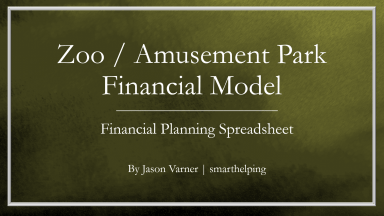
Last version published: 27/12/2023 09:25
Publication number: ELQ-29120-3
View all versions & Certificate

Zoo / Park / Aquarium - Construction and On-Going Operational Cash Flow Model
This model includes financial assumptions and logic specific to constructing and running a Zoo or similar operation.
Further information
A granular approach to cash flow sensitivity analysis of a Zoo or Park.
Anything that has initial construction costs and exhibits / sections with specific costs as well as ticketing revenue (3 tiers max).
Investor distributions.
















